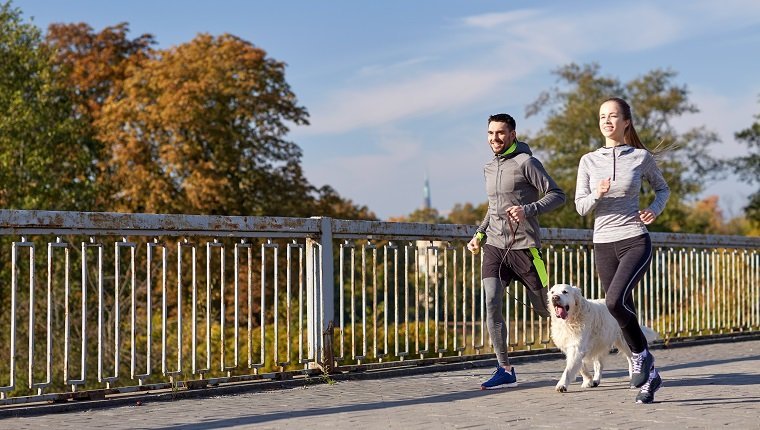You’ve probably seen dogs out for a happy, safe morning jog with their pet parents, eagerly keeping up the pace and having a great time.
You’ve also probably seen dogs dragged along as they try to catch their breath while their humans pull their leashes, running too fast for their pup to keep up.
This isn’t just cruel; it’s unsafe and it can be deadly for some dogs.
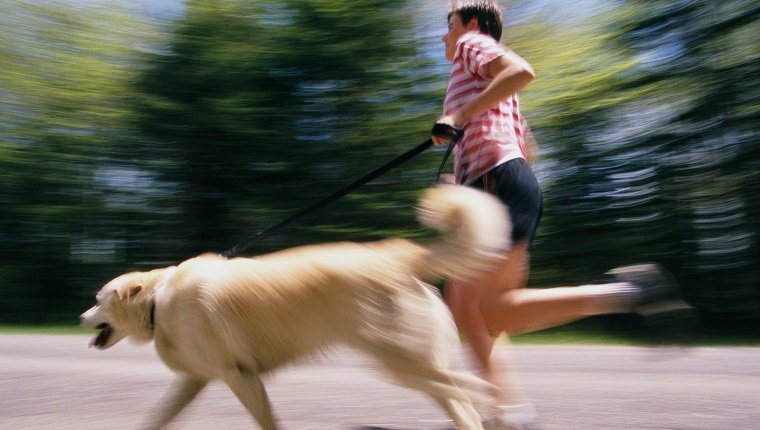
You may be wondering if it’s dangerous to take your dog for a jog or run. Maybe you’ve heard things like, “Dogs are built for short bursts of speed instead of long distances.” Or, on the opposite side of the argument, you may have heard, “Canine obesity is a problem, and a run or jog is a good way to stay at a healthy weight.”
Both of these statements are true for some dogs and false for others. When it comes to determining if jogging is safe for your dog, there are many factors to consider.
Breed Matters
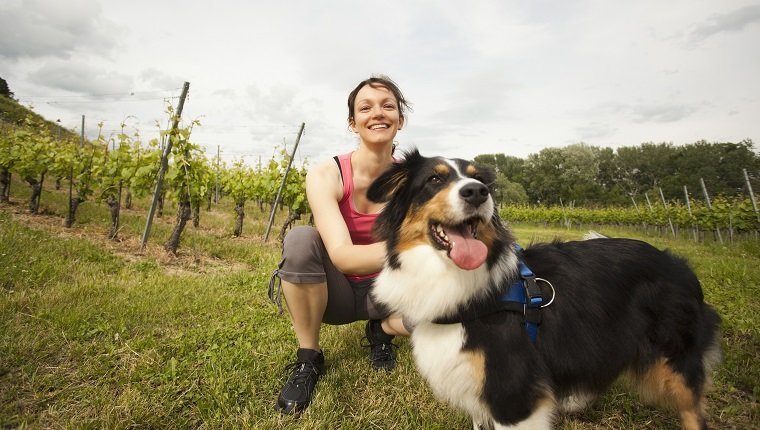
There are several kinds of dogs who were specifically bred for long days of work that involve strenuous activity.
Huskies have the ability to run long distances in sled races. Australian Shepherds can spend long days in the fields herding livestock. Greyhounds were bred for racing.
Some breeds were built for speed, while others are built for distance.
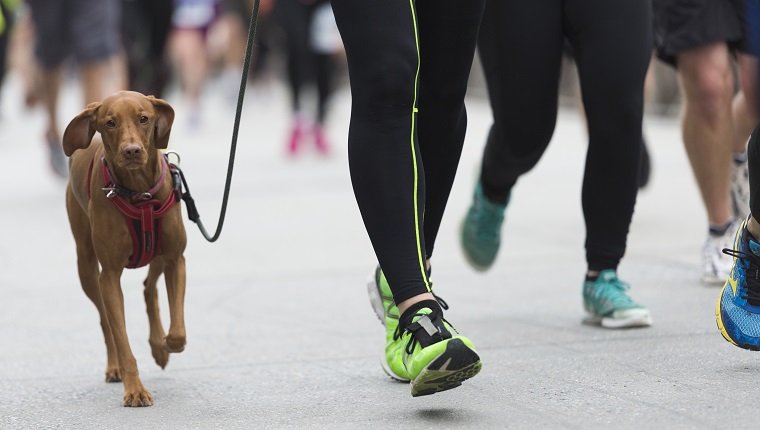
If you’d like to go for a longer jog, Weimaraners, German Shorthaired Pointers, Vizslas, Golden Retrievers, Labradors, Dalmatians, Rhodesian Ridgebacks, Border Collies, Poodles, and Siberian Huskies among other breeds are suited for long, steady runs.
In general, larger breeds with long legs have an easier time keeping up with their humans on jogs.

For short bursts of speed or sprints, Greyhounds, Pit Bulls, English Setters, Beagles, Belgian Sheepdogs, and Pharaoh Hounds among others are good at going fast for a short time.
These dogs may be able to go for extended jogs. However, they are more built for speed and might enjoy a vigorous game of fetch more than a run.

Brachycephalic dogs, or dogs who have short noses, are not suited for running. These include Pugs, Bulldogs, French Bulldogs, Boxers, Pekingese, Shih Tzus, and any other dog with “smushed” faces.
These dogs’ respiratory tracts are in a smaller space, which means they overheat quickly and have more difficulty breathing. It’s not safe for these dogs to run for an extended period of time.
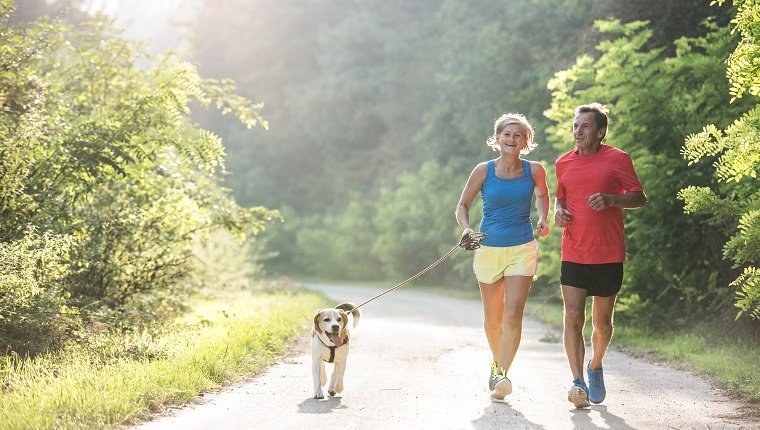
Generally, smaller dogs or dogs with short legs have more difficulty keeping up with humans when it comes to running. They may be able to run for a shorter distance, but if you plan to take them for a jog, you must give them special consideration and realize that you cover a lot more ground in a single step than they do.
Do not try to run long distances with a Dachshund, a Corgi, or any dog with proportionally short legs. They just aren’t built for that kind of activity.
Age Matters

Dogs who are too young or too old should not run for a long time because of the damage it can do to their bodies. Puppies whose bones and joints are still developing can suffer from permanent conditions if they start running too early.
Giant breeds develop slower than their smaller counterparts, so they will need extra time before they have grown enough to jog.
In general, puppies shouldn’t go for extended runs before eight months of age, and even that’s too young for many dogs. The best way to determine if your dog is old enough to start running is to ask your veterinarian.
Your vet will be able to determine if your dog’s growth plates have closed enough to make it safe for them to jog.
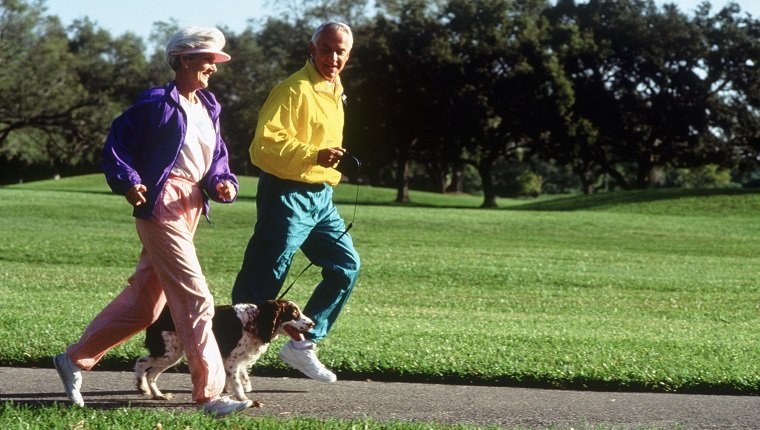
Older dogs may find running difficult, as well. Seniors do not have the same stamina level as younger dogs, and they may also develop conditions with age that make physical activity hard or painful.
Arthritis can cause the joints to ache, and running will make the pain worse. There may also be underlying conditions like heart or respiratory disease that make running dangerous.
You should have regular veterinary exams to make sure your senior dog is physically able to handle the stress of a jog before you try it.
Health Matters
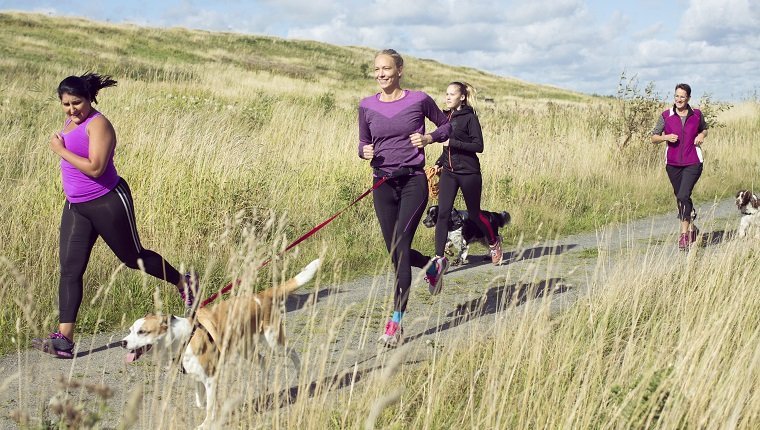
No matter how old your dog is, you should consult your veterinarian before making any changes in their workout regimen. Any dog could develop a health condition that would make running dangerous.
Heart, respiratory, muscle, bone, and joint issues can all leave your dog open to further injury with strenuous physical activity.
Some breeds are genetically prone to developing these conditions. German Shepherds often suffer from hip dysplasia, for example. Your vet should especially be on the lookout for these issues.
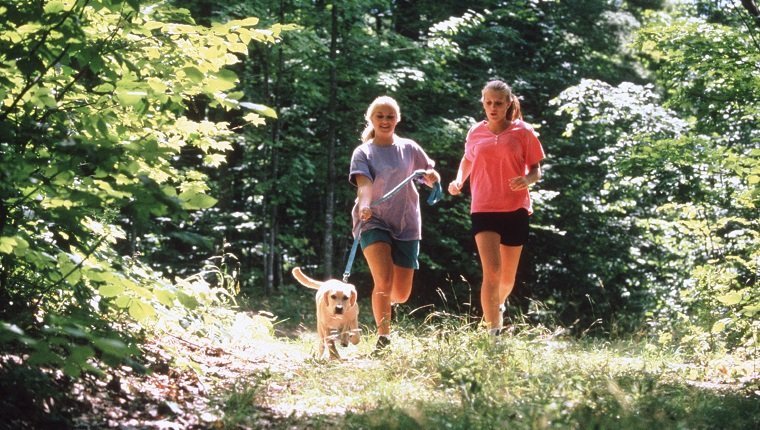
Also, don’t assume that because your dog seems healthy that they can just start running several miles right away. A dog who is out of shape needs to build up their strength and endurance, just like people do.
When starting a new routine, go slow and keep distances short. Do not increase your distance by more than five percent each week.
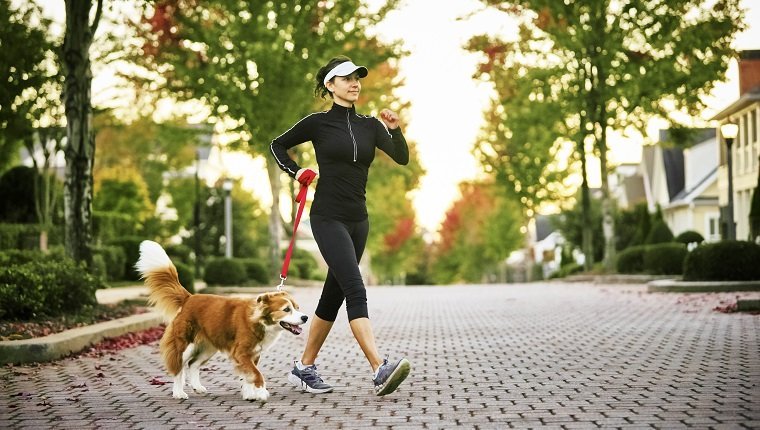
Even healthy dogs should follow a routine to stay healthy and avoid injury on their runs. Just like humans, dogs need to warm up before they go all out or they can risk putting too much strain on their muscles.
Start with a few minutes of walking or slow jogging before you reach full speed.

DO NOT take your dog for a workout immediately following a large meal, no matter how healthy they may be. This can lead to Gastric Dilatation and Volvulus Syndrome, which you probably know as bloat.
Bloat can be life-threatening if it is not corrected with surgery quickly.
Keep your dog hydrated on jogs with frequent water breaks, giving them small amounts each time, rather than long, infrequent water breaks. Taking in a lot of water at a time can also lead to bloat.
The Weather Matters

You should always consider the weather before you take your dog for a run outside.
Certain breeds, like Siberian Huskies, can handle running in the cold, while others, like Rhodesian Ridgebacks, tolerate the heat better.
Pay attention to your dog’s breed and their natural coat before you decide to take them outside for physical activity.
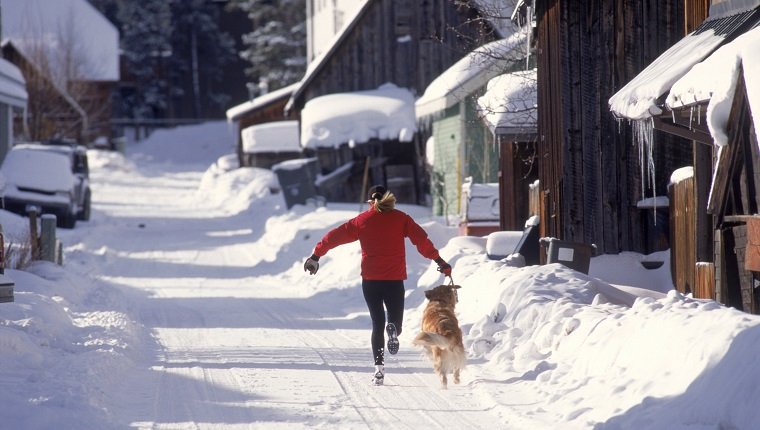
There are dangers to running in any weather that you should be aware of.
Cold weather risks include hypothermia, frostbite, antifreeze poisoning, and damage to paws from salt. You’ll need some form of paw protection.
If your dog’s breed doesn’t have natural protection from the cold with a thick coat, you may want to consider buying a dog jacket for some additional warmth.

Hot weather risks include heat stroke, dehydration, damage to paws from burning pavement, and the presence of more people and dogs outside that could cause problems.
Take frequent water breaks, and use the five second test to make sure pavement isn’t too hot for your dog. That means you must hold the back of your hand on the pavement for five seconds, and if it’s too hot for you, it’s too hot for your dog.
Stick to grassy or shady areas. Also, make sure your dog is properly socialized and can handle distractions caused by people and dogs outside.
Pay Attention To Your Dog

One of the most infuriating things for a dog lover to see is a person jogging with their pup without checking on their dog at all.
They may have headphones on or be looking down at their Fitbit or phone without noticing that their dog is in discomfort or needing a water break.
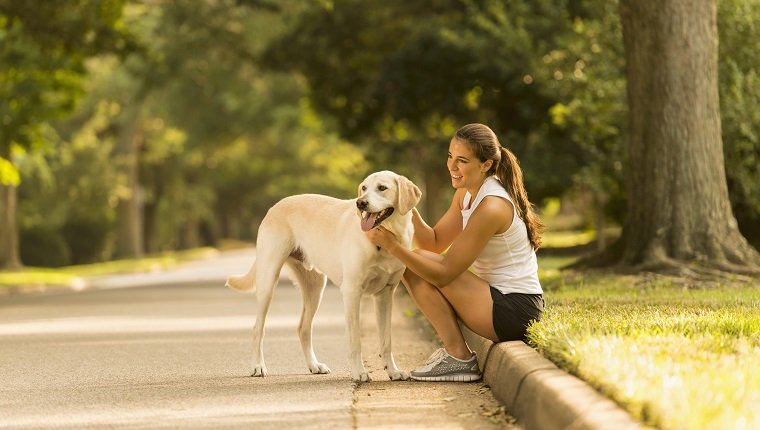
If you want a workout buddy, you have to actually be a buddy. No matter how healthy your dog is or how many times you’ve gone for a jog with nothing going wrong, there is always a risk that something bad could happen, and you have to be prepared.
Watch for signs that your dog is limping, trying to pull over or stop for a break, breathing too heavily, or showing signs of dehydration. Pay attention. Every run. Every time.
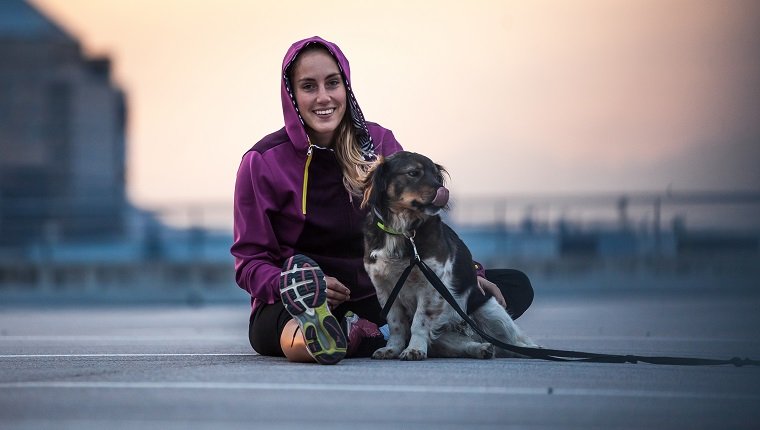
Jogging can be a great, fun way for you and your dog to stay in shape together. Furthermore, it should be a bonding experience that keeps your pup physically stimulated.
Just make sure that your dog is safely able to handle your workout routine, and be responsible.
Do you jog or run with your dog? How do you make sure they stay safe? Let us know in the comments below!

